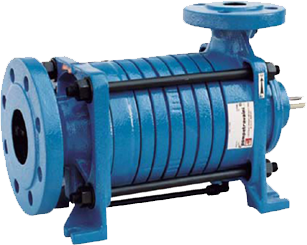
All the various liquid handling centrifugal pump types get classified either as dynamic (kinetic) or positive displacement. For the sake of clarity, the following is a breakdown of liquid handling centrifugal pumps classification.
Dynamic (Kinetic)
Any pump that uses fluid velocity for producing pressure or building momentum to move fluid through the system is dynamic, otherwise known as kinetic. These pumps are classified as either centrifugal or specialized, depending on which method gets used to produce the required velocity.
For centrifugal pumps, an impeller attached to a shaft rotates, producing the energy needed to generate fluid velocity. To provide a pressure boundary and channels through which the liquid funnels, the impeller mounts to a casing. Further classification of centrifugal pumps gets based on flow’s direction, including axial, radial, and mixed.
Positive Displacement
In this case, the pump provides pressure thanks to fixed volumes that expand and contact. This action is what pushes the fluid through the system. As for the moving parts of the pump, they operate in a reciprocating or rotary manner.
For reciprocating pumps, fluid flows in a linear motion, by the back-and-forth movement of a diaphragm or piston through a cylinder. The flow of the liquid occurs because of suction or by going out through a check valve on the discharge. As for rotary pumps, fluid gets moved by a rotor, which has various parts that serve as dividers in between the chambers. Once the rotor rotates, it forces liquid through and then out of the pump.
Getting Professional Assistance
When purchasing a pump, there are several factors to consider for each liquid handling centrifugal pumps classification. A few examples of these include capacity, maximum flow rate, head pressure, flow type, maximum pressure, flow characteristics, available space, initial cost, ongoing maintenance cost, and energy consumption.
Instead of feeling overwhelmed when selecting a pump, you can turn to us at PFS Pumps for expert assistance. We will gladly answer your questions and provide the guidance needed to ensure that you get the correct product. Please visit us online or call today for more information.
